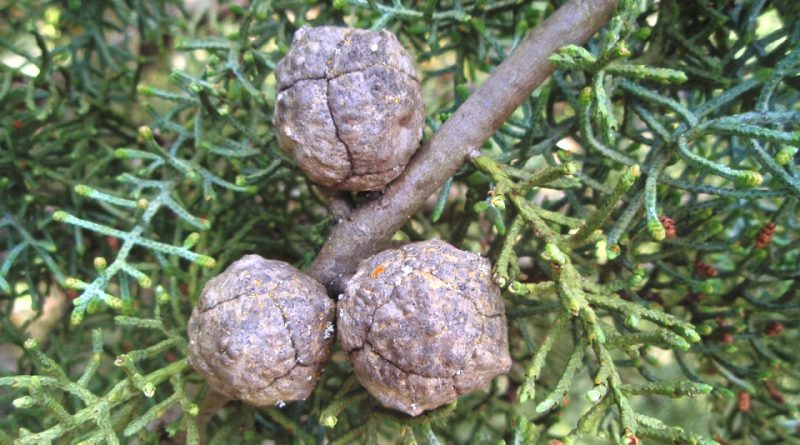Cupressus arizonica
Cupressus arizonica
The Arizona cypress (Cupressus arizonica E.Greene) is an arboreal species belonging to the Cupressaceae family.
Systematics –
From a systematic point of view it belongs to the Domain Eukaryota, Kingdom Plantae, Subarign Tracheobionta, Superdivisione Spermatophyta, Division Pinophyta, Classe Pinopsida, Order Pinales, Family Cupressaceae and then to the genus Cupressus and to the species C. arizonica.
Etymology –
The term Cupressus comes from cupréssus, Latin name of the common cypress, derived from the Greek κῠπάρισσος cypárissos, in turn of non-Indo-European origin: perhaps from Akkadian kapárru-ísu balance-tree, or from the Hebrew gopher tree name the whose wood was used to build the Ark. The specific arizonic epithet refers to the origin from the state of Arizona in the USA.
Geographic Distribution and Habitat –
Cupressus arizonica is a coniferous tree native to Arizona (USA) and northern Mexico; it was introduced in Europe at the end of the last century for ornamental purposes. It has an area that extends in the south-western part of the United States and in northern Mexico. It is not an endangered species, although some of its varieties are.
Description –
The Cupressus arizonica is an evergreen conifer that reaches 15-20 meters in its original area; it has a generally conical head in the young specimens that with the maturity becomes columnar. The leaves are flakes with green-gray coloring, which emit an unpleasant smell if crushed; the bark has a reddish-brown color. It is a monoecious plant with male and female reproductive structures present in the same plant, but separated in different branches. The male ones are small terminal cones, while the female structures are formed by macrosporophylls gathered in a round cone.
Within this species there are some varieties:
– C. arizonica var. glabrous, found in some small areas of northern and central Arizona;
– C. arizonica var. montana, an endangered variety that lives in some of the small mountainous areas of northwestern Mexico;
– C. arizonica var. nevadensis, widespread in some areas of Southern California,
– C. arizonica var. stephensonii, whose range extends from southern California to northwestern Mexico.
Cultivation –
The Arizona cypress is a plant that adapts and grows on poor soil, rocky and arid, in any pH condition, but if grown on more generous soils (eg peaty or clayey) and / or irrigated gives better results especially for regarding the speed of growth. It is not very tolerant of excessive surface moisture or ground and is not suitable for high-altitude areas. Unlike other conifers it is seriously damaged by fire. It does not always resist winds but in certain circumstances it can also be used as windbreaks. For details of the cultivation technique, see the following sheet.
Uses and Traditions –
The Cupressus arizonica is a plant, for the most part, used for ornamental and landscape purposes due to its relative adaptability to different environments and uses.
Preparation Mode –
This plant, in addition to its ornamental uses, has no other documented food or phytotherapeutic use.
Guido Bissanti
Sources
– Wikipedia, the free encyclopedia.
– Treben M., 2000. Health from the Pharmacy of the Lord, Advice and experience with medicinal herbs, Ennsthaler Publisher
– Pignatti S., 1982. Flora of Italy, Edagricole, Bologna.
– Conti F., Abbate G., Alessandrini A., Blasi C. (edited by), 2005. An annotated checklist of the Italian vascular flora, Palombi Editore.
Warning: Pharmaceutical applications and alimurgical uses are indicated for informational purposes only and do not in any way represent a medical prescription; there is therefore no liability for their use for curative, aesthetic or food purposes.


